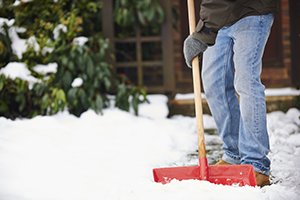Tips to avoid a Snow-Shoveling Injury
Each year in the United States snow shoveling causes thousands of muscle sprains, broken bones, hurt backs, head injuries, and even deadly heart attacks.

To avoid a snow-shoveling injury follow these simple tips from the American Academy of Orthopaedic Surgeons:
- Check with your doctor if you have any medical problems. Clearing snow places a great deal of stress on the heart--so if you have a medical condition or do not exercise regularly, you should speak with your doctor before shoveling or snow blowing. You may also wish to consider hiring someone to remove the snow, rather than doing it yourself.
- Warm up your muscles with some light stretch exercises for 10 minutes.
- Pace yourself and take frequent breaks. Don’t shovel more than 30 to 60 minutes, just like you would during a regular exercise session. Take frequent breaks and prevent dehydration by drinking plenty of fluids. If you experience chest pain, shortness of breath, or other signs of a heart attack, stop the activity and seek emergency care.
- Proper equipment. Use a snow shovel with a pole that is longer, adjustable, and curved to decrease the amount of bending needed to lower your risk of muscle injury. More user-friendly shovels are typically made of lighter materials such as plastic or lightweight aluminum.
- Proper lifting. Try to push the snow instead of lifting it. If you must lift, squat with your legs apart, knees bent, and back straight. Lift with your legs. Do not bend at the waist.
- Safe technique. Do not throw the snow over your shoulder or to the side. This requires a twisting motion that stresses your back.
- Dress appropriately by wearing slip-resistant shoes and light, layered, water repellent clothing that provides both ventilation and insulation.
- Shovel often. The amount of snow that has to be removed is less and then lighter.